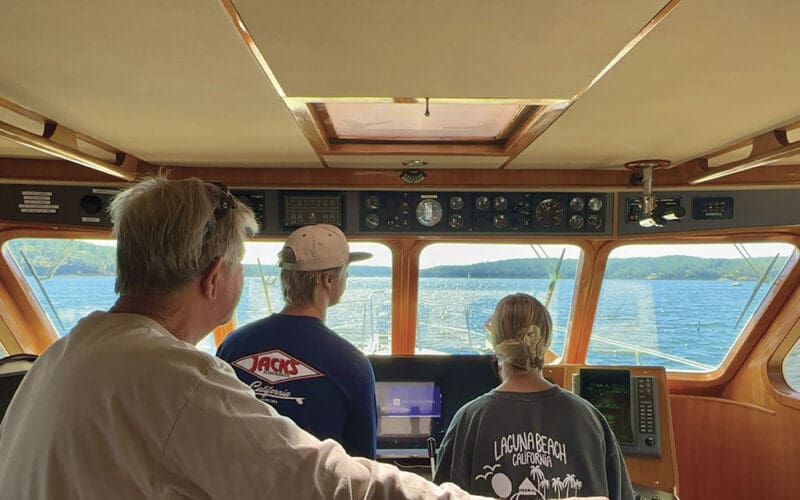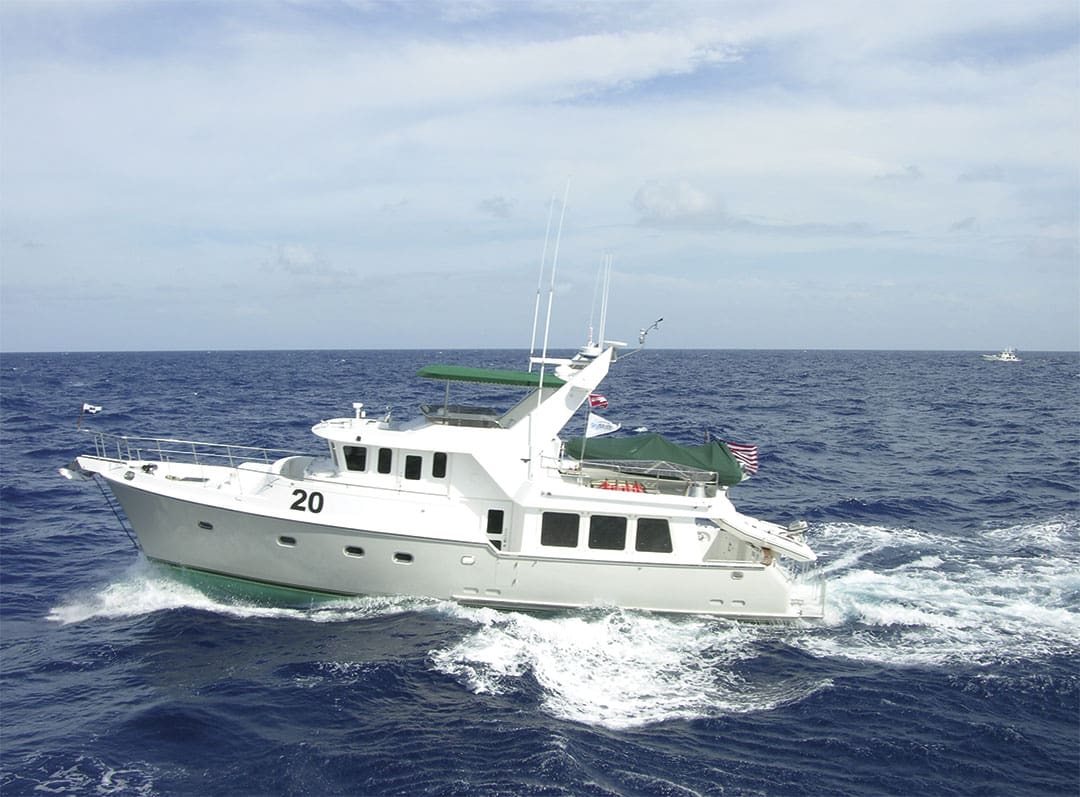
While there has never been a perfect boat, a few have come pretty close, and the Nordhavn 57 is one such vessel. With 40 hulls delivered, the 57 was retired and production was halted in 2006. During the summer of 2004, I had the opportunity to put the 35th 57 through her paces. Named Atlantic Escort, we led an 18-yacht fleet consisting of 15 Nordhavns and three other capable trawlers across the Atlantic Ocean from Ft. Lauderdale via Bermuda, the Azores and into Gibraltar.
The fleet was composed of Nordhavns as small as the N40 Uno Mas to Crosser, a custom luxury yacht approaching 100 feet. We decided to split the fleet into two groups — the small or “slow” fleet and the larger, “fast” fleet. The departures were staggered so both fleets would arrive at their destination the same time and we were successful on all three legs. Being the lead escort boat, Atlantic Escort started first with the slow fleet and always finished just behind the last arriving boat.
The N57 was the perfect boat for the Atlantic mission. Her incredible efficiency allowed her to complete each leg with an abundance of reserve fuel. Even on the long leg from Bermuda to Horta, we transferred about one hundred gallons to Uno Mas to get her into port with a safe reserve. With our fleet surgeon aboard we were called to render assistance numerous times and Atlantic Escort’s powerful Lugger engine along with her bulbous bow and slippery underbody allowed us to push the limits of formula hull speed and move quickly across the fleet to where we were needed. There were two other Nordhavn 57s in the transatlantic fleet — Goleen and Emeritus — and everyone aboard agreed upon the 57’s exceptional efficiency, speed and sea kindly, comfortable ride. Nationally recognized engine and generator expert Bob Senter was aboard Goleen and likened her to a “fiberglass vault,” describing the strength and security he perceived on his transatlantic crossing.
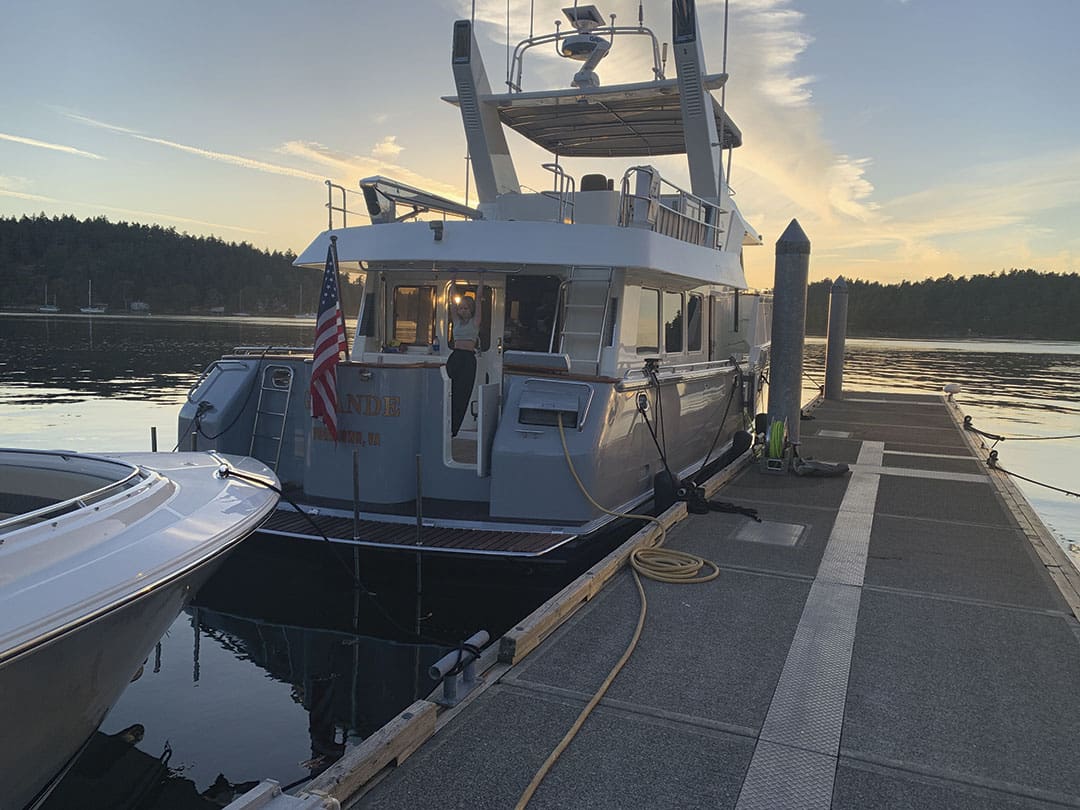
Over the years, as the principals of Pacific Asian Enterprises (the parent company of Nordhavn), Dan Streech, Jeff Leishman and I have had ownership rights to numerous (unsold demonstrator) Nordhavns (including two 40s, a 55, the 57, a Coastal Pilot 59 and most recently a Nordhavn 41) all of which we enjoyed personal time aboard in Alaska, Mexico, and the Bahamas. Earlier this year we began discussing the resale of a 22-year-old Nordhavn 57 with her original owners: Jim Vogeley and Nial Quinlan. The thought hit me that the 57 might be the perfect boat for Dan, Jeff and me to own. Within a few days, in early March, Jeff and I along with our sons Eric and Drew were headed south from the Chesapeake to our Palm Beach office aboard Grande — the 16th Nordhavn 57 built.
It was an easy transaction, as we knew the boat was essentially as solid as the day she was built, powered by the Komatsu based 12.5-liter Lugger diesel with about 2,000 hours, a bulletproof, mechanical injected engine that could easily run in excess of 30,000 hours. She was well equipped with proportional hydraulic thrusters, hydraulic windlass, anchor wash-down and emergency bilge pumping. These were all powered off the 4.5-liter John Deere Lugger. Additional equipment included hydronic diesel-fired heating as well as air conditioning and dual generators. Even after all these years, this was a really nice Nordhavn 57.
Running the Intercostal Waterway south, we entered the Atlantic at Charleston for an offshore leg into Palm Beach. Pushing against the Gulf Stream, fresh winds came up out of the west and before long, my affection for this model was reconfirmed. With heavy spray flying, the boat remained rock solid with minimal roll and pitch, she just drove on south making good speed and leaving winter weather behind — we were soon cooling Grande’s interior rather than heating it. It was a great trip for Jeff and me with our sons aboard, and we looked forward to the summer.
Nordhavn’s Southeast Manager Garrett Severen and our great Nordhavn staff in Palm Beach gave Grande a good once over and she was soon loaded aboard a freighter bound for Nanaimo, British Columbia. Eric offloaded her and ran her south to our Anacortes office where further maintenance and upgrades were made under the supervision of Nordhavn Northwest manager Devin Zwick.
July saw Dan Streech and his family aboard. Having cruised southeast Alaska and northern British Columbia, Dan wanted to savor the San Juan Islands at a slow and relaxed pace. With four grandchildren aboard, along with his daughter Erin, her husband Josh Lloyd (both heads of PAE’s accounting department), and Dan’s son Trevor Streech and daughter-in-law Morgan, they put the 57 accommodations to the test.
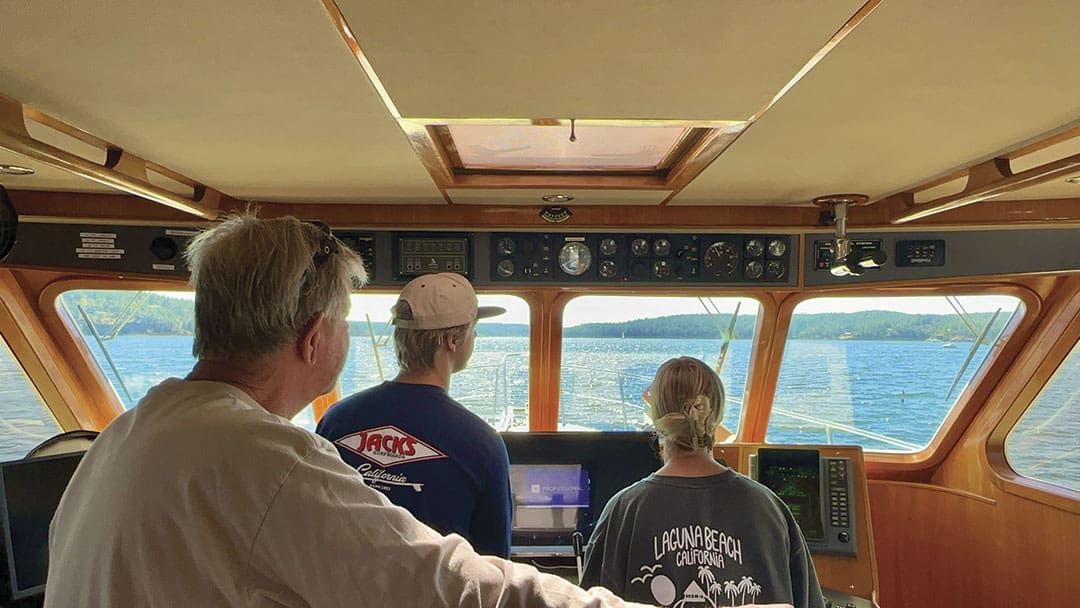
Grande spent August further north as far as Blind Channel with time spent fishing out of the Campbell River, Desolation Sound as well as Princess Louisa Inlet. With my sons James and Eric, our wives and three grandchildren aboard, we had a crowded but very happy boat.
Jeff’s time consumed all of September with wife Nancy, sons Drew, Bret, and daughter Megan, their wives and Jeff’s grandchildren spending the month lazily cruising the San Juans, the Canadian Gulf Islands and Vancouver Island.
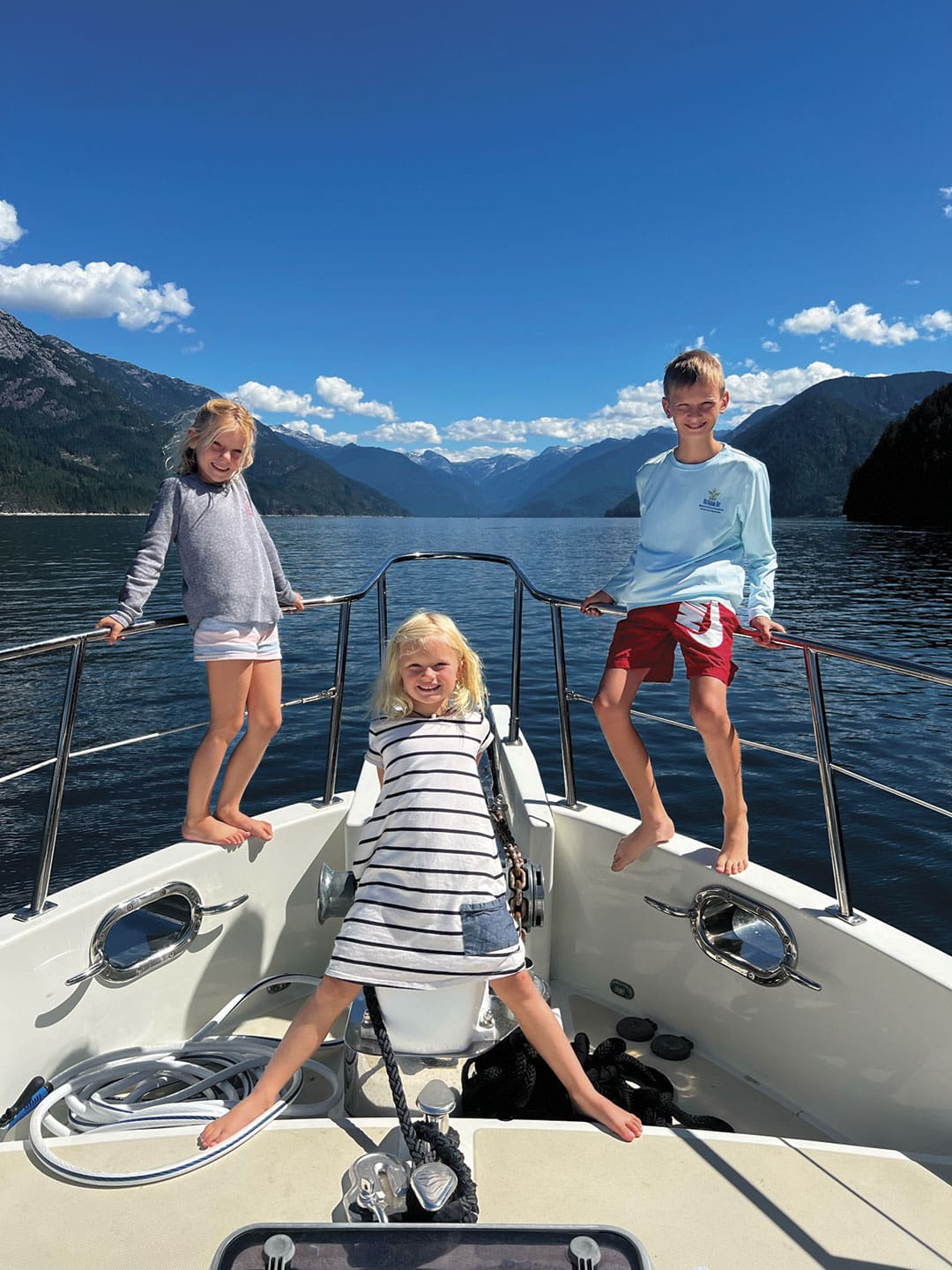
Harper, Sienna and James.
The first of October signaled summer’s end, but the Nordhavn loves to travel and she’s now southbound for the Sea of Cortez. With accommodations reserved at the Puerto Escondido Marina south of Loreto, it’s an easy flight from San Diego.
As boat builders and designers, we spend time aboard our Nordhavns evaluating, and while on Grande, it was no different. This model was originally designed in the mid 90s, as the fourth model in the Nordhavn lineup. First was the venerable N46 followed by the N62, and then the N50. Like the 50, the N57 incorporated design features such as a bulbous bow and maintenance strakes, which provide added head room along with the single engine. Both have a relatively low profile and greater power for their displacement than their predecessors. Performance of the 50 and 57 is exceptional with great low speed efficiency and the ability to push the limit of hull speed if the need arose.
The hull form of the 50 and 57 showed a direction towards the modern Nordhavn hull in that they had fuller and flatter hull sections aft, which could better support a heavy load of fuel, along with equipment and provisions. A Nordhavn 46 or 62 appears more burdened by weight in a full load departure condition but with newer models, this condition is barely noticeable.
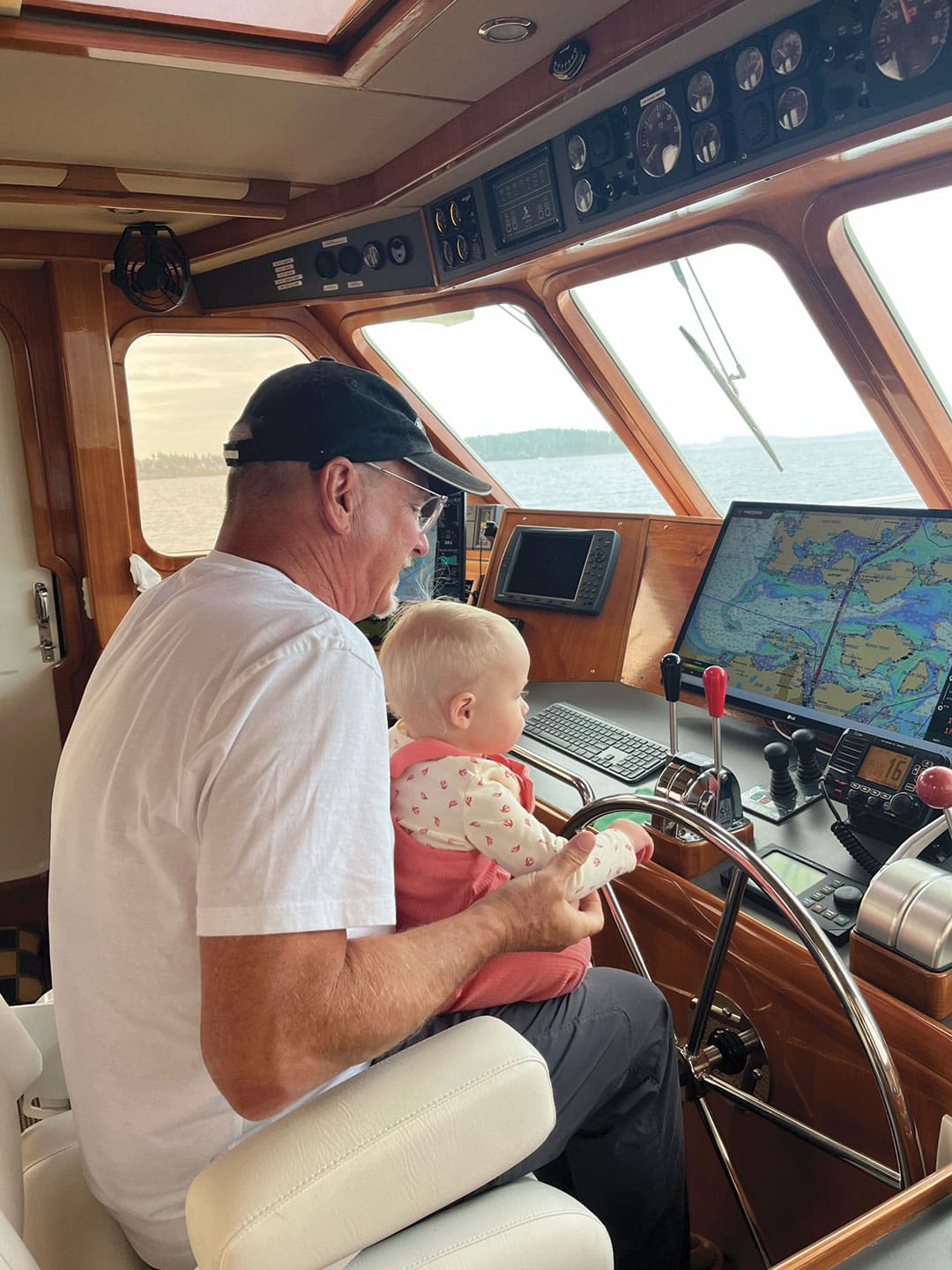
We were aware that these flatter and fuller stern sections would reduce efficiency due to added displacement and wetted surface, however we also recognized that added fuel could be carried which, despite the slight efficiency loss, resulted in a longer range. During early tank testing almost 30 years ago, we noted that these fuller stern sections helped reduce pitch amplitude while going up swell.
Nordhavn hull forms continue to evolve and with the advent of computational fluid dynamics (CFD), improvements in efficiency and performance continue. The days of physical tank testing are behind us but the information gained with CFD allows for subtle refinement and is useful in the development of propeller efficiency, skeg, keel and appendage drag, and to optimize the shape and size of the bulbous bow, when used.
Even with Computational Fluid Dynamics, there is no substitute for experience and time aboard. While on Grande in Mexico this winter, we’ll be further assessing the performance and handling of our Nordhavn 57 and evaluating how improvements can be made to future designs. n
Jim Leishman is vice president of Pacific Asian Enterprises.

